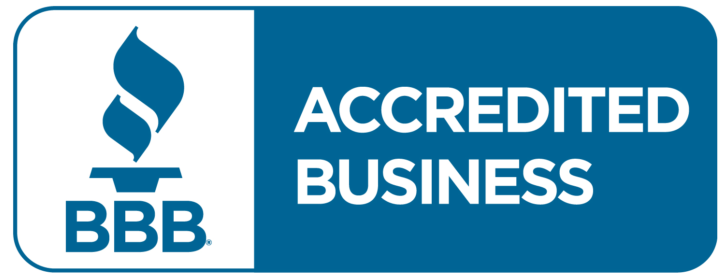Use accounting software to streamline approvals and avoid delays that can throw off your payment schedule. Falling behind industry standards may be a sign that something isn’t working as well as it should—like slow processes or gaps in your workflow—that could be improved to boost performance. That’s not always ideal—it can create a mismatch between cash going out and revenue coming in, putting unnecessary pressure on your cash flow. Barbara is a financial writer for Tipalti and other successful B2B businesses, including SaaS and financial companies.
This approach strengthens vendor relationships because vendors will view the business as a reliable customer who pays on time. For example, accounts receivable balances are converted into cash when customers pay invoices. The key is to align your payment practices with your cash flow goals while maintaining strong relationships with vendors. While extending payment terms can help preserve cash, it’s important to balance this with maintaining strong supplier relationships to avoid late fees or supply chain disruptions. DPO helps you understand the average number of days your business takes to pay its suppliers. By tracking this ratio over time, your team can find the right balance—making sure suppliers are paid on time while keeping enough cash available for other business needs.
How to Calculate Accounts Payable Turnover Ratio
The formula can be modified to exclude cash payments to suppliers, since the numerator should include only purchases on credit from suppliers. However, the amount of up-front cash payments to suppliers is normally so small that this modification is not necessary. The cash payment exclusion may be necessary if a company has been so late in paying suppliers that they now require cash in advance payments.
As with most financial metrics, a company’s turnover ratio is best examined relative to similar companies in its industry. For example, a company’s payables turnover ratio of two will be more concerning if virtually all of its competitors have a ratio of at least four. A ratio that increases quarter on quarter, or year on year, shows that suppliers are being paid more quickly, which could indicate a cash surplus. As such, a rising AP turnover ratio is likely to be interpreted as the business managing its cash flow effectively and is often seen as an indicator of financial strength in the company.
Track your numbers with confidence using the SaaS Metrics Cheat Sheet.
Thus, it is preferred to go with expert accounts payable services because of the complex nature of the Accounts Payable Turnover Ratio computation. These will assist you in the calculation process and offer personalized recommendations for modifying your AP ratio. Whether your goal is to increase, decrease, or balance your AP turnover ratio, tracking trends accrued income and using automation software can make the process much easier. Benchmarking your AP turnover ratio against current industry standards helps identify whether your business is keeping pace. It’s directly related to the AP turnover ratio—a higher AP turnover ratio means a lower DPO (faster payments), while a lower AP turnover ratio results in a higher DPO (slower payments).
Formula for the Accounts Payable Turnover Ratio
If the company’s AP turnover is too infrequent, creditors may opt not to extend credit to the business. A lower accounts payable turnover ratio means slower payments, or might signal a cash flow problem — which would be bad, of course. Accounts payable turnover ratio, or AP turnover ratio, is a measure of how many times a company pays off AP during a period. Days payable outstanding (DPO) calculates the average number of days required to pay the entire accounts payable balance.
- You’ll see how your AP turnover ratio impacts other metrics in the business, and vice versa, giving you a clear picture of the business’s financial condition.
- See how forward-thinking finance teams are future-proofing their organizations through AP automation.
- A low AP turnover ratio could indicate that a company is in financial distress or having difficulty paying off accounts.
- You can efile income tax return on your income from salary, house property, capital gains, business & profession and income from other sources.
- For the period you’re measuring, collect the net credit sales total and accounts receivable balances.
- A high ratio (prompt payment) is desirable but a company with shortage of cash should avail the full credit period allowed by its suppliers as it would hep the company manage its cash flows.
Or apply the calculation comparing the payables turnover in days to the receivables turnover in days if that’s easier for you to understand. The higher the accounts payable turnover ratio, the more often the company pays its suppliers. The accounts payable turnover ratio serves as a crucial indicator of financial health and operational efficiency. Its proper calculation, interpretation, and optimisation can significantly impact a company’s success in managing working capital and maintaining strong supplier relationships. Conversely, a low ratio might indicate poor cash flow management or strategic use of extended payment terms to optimise working capital. Historical analysis shows that companies with optimised accounts payable turnover ratios consistently outperform their peers in terms of working capital efficiency and profitability.
You’ll see whether the business generates enough revenue to pay off debt in a timely manner. To improve cash flow consider how you can speed up your accounts receivable process, and incentivize customers to pay faster. One way to improve your AP turnover ratio is to increase the inflow of cash into your business. More cash allows you to pay off bills, and the faster you receive cash, the fast you can make payments. Accounts payable turnover ratio is important because it measures your liquidity and can show the creditworthiness of the company. This ratio provides insights into the rate at which a company pays off its suppliers.
AP turnover ratio example
With all your expense data in a single dashboard, you can get real-time visibility into all your financial metrics, giving you a clear picture of your company’s financial health. Learn more about how Ramp’s finance operations platform saves customers an average of 5% a year. While the AP turnover ratio provides insight into how efficiently you pay suppliers, it gains more meaning when analyzed alongside other financial KPIs.
Most companies will have a record of supplier purchases, so this calculation may not need to be made. The rules for interpreting the accounts payable turnover ratio are less straightforward. In some cases, cost of goods sold (COGS) is used in the numerator in place of net credit purchases. Average accounts payable is the sum of accounts payable at the beginning and end of an accounting period, divided by 2. In the formula, total supplier credit purchases refers to the amount purchased from suppliers on credit (which should be net of any inventory returned).
- The accounts receivable (AR) turnover ratio measures the number of times a company gets paid by its customers.
- In a nutshell, the accounts payable turnover ratio measures how many times a business pays its creditors during a specified time period.
- Regularly review and update credit limits to reflect changing customer circumstances.
- The accounts payable turnover ratio is a liquidity ratio that helps analysts understand a company’s short-term financial health and its ability to manage cash flow effectively.
- The longer it takes to sell inventory and collect accounts receivable, the more cash tied up for that length of time.
The bakery could compare this ratio to industry peers to see if it’s an outlier. If similar businesses have a lower day ratio, say 40, Maria’s Bakery could consider how to improve its ratios to make the business more competitive. The bakery can calculate the day ratio by dividing the number of days in the year (365) by the turnover ratio. If your business can handle it, you may deliberately aim for a lower ratio so that other operating metrics become attuned to attracting customers with better credit terms. You can evaluate your accounts receivable turnover by benchmarking it against the average for your industry or niche.
On the other hand, a low AP turnover ratio suggests your business takes longer to pay suppliers. A lower ratio indicates slower payments, which can help with cash flow but may put strain on supplier relationships. Keeping track of how and when your business pays its suppliers is essential for managing cash flow.
The accounts receivable turnover ratio is the opposite of accounts payable turnover ratio. It measures the rate at which a company collects the money owed by customers. It reflects the speed at which short-term debt is paid to a company by its customers. Accounts payable turnover ratio deals with the rate at which a company pays off its accounts payable, money or owes suppliers or vendors). While the former shows how quickly a company is paid by its customers, the later shows how fast a company pays off its debts. The accounts payable turnover ratio stands as one of the most revealing metrics of a company’s operational how many shares to authorize efficiency and financial health.
It was impracticable to determine how soon a company was going to repay the debt. Thus, various metrics are developed to identify this, like accounts payable turnover ratio, debt-to-asset ratio, asset-to-equity ratio, debt-to-capital ratio, etc. The AP turnover ratio measures how often your business pays suppliers in each period, but it doesn’t directly show how long it takes to settle invoices. If you pay invoices quicker than necessary, you’re either paying short-term loan interest or not earning interest income as long as you can on your cash balances. Have you thought about stretching accounts payable and condensing the time it takes to collect accounts receivable? If you do, you want to be sure that your business treats vendors reasonably well.
Since a company’s accounts payable balances must be paid in 12 months or less, they are categorized as a current liability in the why you should get a cpa to prepare your taxes financial statements like the balance sheet. Vendors also use this ratio when they consider establishing a new line of credit or floor plan for a new customer. For instance, car dealerships and music stores often pay for their inventory with floor plan financing from their vendors. Vendors want to make sure they will be paid on time, so they often analyze the company’s payable turnover ratio. The days payable outstanding (DPO) metric is closely related to the accounts payable turnover ratio.

